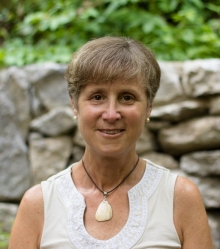On the evening of January 27, more than a thousand people flooded Terminal E at Logan Airport to protest the Trump administration’s travel ban against immigrants and refugees from seven predominantly Muslim countries. Two days later, thousands more packed Copley Plaza to raise their voices against the ban, and just last week, hundreds gathered in silence with linked arms around the Roxbury mosque in an interfaith Chain of Peace to express solidarity with the local Muslim community. While Massachusetts Muslims continue to face a barrage of hostility and abuse fueled by Trump’s anti-Muslim invective and policies, the strong public push back to his policies offers some reassurance that immigrants and refugees are not alone and will not be abandoned to reactionary forces and policies as they have been in the past.
 The city of Boston and the commonwealth as a whole have long been recognized as immigrant- and refugee-friendly places. As chronicled in my book, The New Bostonians, and the Global Boston website that has grown out of it, Boston has welcomed large-scale migrations of newcomers since the Great Famine sent tens of thousands of destitute Irish to our ports in the 1840s. Although there were no official refugee policies prior to World War II, Massachusetts repeatedly became a refuge for the persecuted and the vulnerable—Eastern European Jews fleeing Tsarist repression, survivors of the Armenian genocide of 1915–16, and periodic streams of new arrivals fleeing epidemics and earthquakes in Italy and Portugal.
The city of Boston and the commonwealth as a whole have long been recognized as immigrant- and refugee-friendly places. As chronicled in my book, The New Bostonians, and the Global Boston website that has grown out of it, Boston has welcomed large-scale migrations of newcomers since the Great Famine sent tens of thousands of destitute Irish to our ports in the 1840s. Although there were no official refugee policies prior to World War II, Massachusetts repeatedly became a refuge for the persecuted and the vulnerable—Eastern European Jews fleeing Tsarist repression, survivors of the Armenian genocide of 1915–16, and periodic streams of new arrivals fleeing epidemics and earthquakes in Italy and Portugal.
After World War II, religious-affiliated groups in Boston such as the Hebrew Immigrant Aid Society and Catholic Charities resettled Holocaust survivors and displaced persons from across Europe as well as Cold War–era refugees from Communist regimes in Eastern Europe, Cuba, the Soviet Union, and Southeast Asia. Since the 1980s, violence, repression and wars across the world—many in which the U.S. was involved—have brought thousands to Massachusetts from places such as El Salvador, Guatemala, Colombia, Iran, Iraq, Haiti, and Somalia.
These common experiences of repression and exile have often fostered sympathy and solidarity with refugees and immigrants among the region’s native-born. But we should not assume that the vocal support we’ve seen recently will be sustained. History also offers numerous examples of Massachusetts residents leading the fight against immigration—from the Know Nothing Party’s attack on Irish immigrants in the 1850s, to the Brahmin-led Immigration Restriction League’s racialized campaign to curtail immigration in the early twentieth century, to the widespread acts of assault, arson, and murder of Vietnamese and Cambodian refugees in greater Boston during the 1980s. These events remind us that nativism and racism are an ugly and persistent current in our history. They flare up when economic and social resentments grow and politicians exploit those resentments to consolidate their power.
 Marilynn S. Johnson is author of The New Bostonians: How Immigrants Have Transformed the Metro Area since the 1960s.
Marilynn S. Johnson is author of The New Bostonians: How Immigrants Have Transformed the Metro Area since the 1960s.